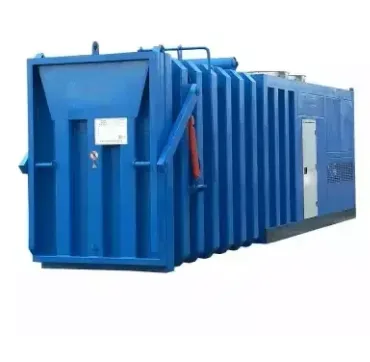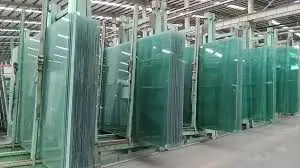When it comes to selecting materials for windows, doors, or protective surfaces, the choice between tempered glass and normal glass can significantly impact both safety and performance. Understanding the fundamental differences helps consumers make an educated decision, aligning with personal requirements or business needs.

Tempered glass, also known as toughened glass, is a type of safety glass processed through controlled thermal or chemical treatments to increase its strength compared to normal glass. The tempering process increases the durability and impact resistance of this glass type. Unlike standard glass, which shatters into sharp, jagged pieces, tempered glass crumbles into small, blunt, pebble-like fragments when broken. This characteristic significantly reduces the risk of injury, making tempered glass a popular choice for applications where human safety is a concern, such as automobile windows, shower doors, or glass doors and panels in public buildings.
One of the primary features distinguishing tempered glass from regular glass is its thermal performance. Tempered glass undergoes a rapid heating and cooling treatment, leading to a sturdier and more resilient structure. This ability to withstand extreme temperatures without breaking makes tempered glass ideal for environments exposed to sudden thermal changes, like oven doors, stovetops, or even sun-exposed windows where temperature fluctuation is common.

From a safety perspective, tempered glass provides high resistance to bending forces. The internal stresses induced during its creation provide a balanced tension-compression structure, allowing it to absorb impacts that ordinary glass cannot endure without breaking. This factor is particularly valuable for safety features in architectural designs, furniture glass tops, and various electronic devices that require extra protection.
On the other hand, normal glass, often referred to as annealed glass, is easier and cheaper to produce. It is manufactured by slowly cooling the molten material to eliminate internal stresses, resulting in a softer and more malleable product. This type of glass is commonly used in places where high strength is not a critical requirement, like picture frames, cabinet doors, and interior applications not exposed to high stress or abrupt temperature shifts.
what is the difference between tempered glass and normal glass
However, the choice of glass should not be based solely on strength and safety. Acoustic performance is another significant consideration. Tempered glass offers superior acoustic dampening properties compared to normal glass. Its dense composition and rigidity can enhance noise reduction, making it a favorable option for sound-sensitive environments such as offices, recording studios, or homes located in bustling urban areas.
In terms of visual clarity, both tempered and normal glass provide excellent transparency, but tempered glass often comes with the added benefit of reduced glare and greater light diffusion. This quality can improve the aesthetic and functional appeal of spaces by maximizing natural light without suffering from direct sun exposure, often requiring additional coverings or treatments for regular glass.
Selecting between tempered and normal glass is not merely a matter of cost. While normal glass offers economical advantages and suffices for low-risk applications, the durability, safety, and performance benefits of tempered glass justify its higher cost in risk-prone scenarios. Engaging with a knowledgeable supplier who understands the specific demands of your project can provide valuable insights into making the appropriate choice. Additionally, compliance with local building codes may dictate the necessity for tempered glass over normal glass in specific applications, emphasizing its role in maintaining a secure and legally compliant property.
In summary, tempered glass stands out through its enhanced safety, durability, thermal performance, and acoustic benefits, making it an optimal choice for environments demanding higher resilience and protection. However, normal glass retains its place as a cost-effective alternative for less demanding applications. Taking into account the unique demands of each project and prioritizing factors like safety, environmental exposure, and thermal stress will ensure a well-informed choice between these two types of glass.
 Afrikaans
Afrikaans  Albanian
Albanian  Amharic
Amharic  Arabic
Arabic  Armenian
Armenian  Azerbaijani
Azerbaijani  Basque
Basque  Belarusian
Belarusian  Bengali
Bengali  Bosnian
Bosnian  Bulgarian
Bulgarian  Catalan
Catalan  Cebuano
Cebuano  Corsican
Corsican  Croatian
Croatian  Czech
Czech  Danish
Danish  Dutch
Dutch  English
English  Esperanto
Esperanto  Estonian
Estonian  Finnish
Finnish  French
French  Frisian
Frisian  Galician
Galician  Georgian
Georgian  German
German  Greek
Greek  Gujarati
Gujarati  Haitian Creole
Haitian Creole  hausa
hausa  hawaiian
hawaiian  Hebrew
Hebrew  Hindi
Hindi  Miao
Miao  Hungarian
Hungarian  Icelandic
Icelandic  igbo
igbo  Indonesian
Indonesian  irish
irish  Italian
Italian  Japanese
Japanese  Javanese
Javanese  Kannada
Kannada  kazakh
kazakh  Khmer
Khmer  Rwandese
Rwandese  Korean
Korean  Kurdish
Kurdish  Kyrgyz
Kyrgyz  Lao
Lao  Latin
Latin  Latvian
Latvian  Lithuanian
Lithuanian  Luxembourgish
Luxembourgish  Macedonian
Macedonian  Malgashi
Malgashi  Malay
Malay  Malayalam
Malayalam  Maltese
Maltese  Maori
Maori  Marathi
Marathi  Mongolian
Mongolian  Myanmar
Myanmar  Nepali
Nepali  Norwegian
Norwegian  Norwegian
Norwegian  Occitan
Occitan  Pashto
Pashto  Persian
Persian  Polish
Polish  Portuguese
Portuguese  Punjabi
Punjabi  Romanian
Romanian  Russian
Russian  Samoan
Samoan  Scottish Gaelic
Scottish Gaelic  Serbian
Serbian  Sesotho
Sesotho  Shona
Shona  Sindhi
Sindhi  Sinhala
Sinhala  Slovak
Slovak  Slovenian
Slovenian  Somali
Somali  Spanish
Spanish  Sundanese
Sundanese  Swahili
Swahili  Swedish
Swedish  Tagalog
Tagalog  Tajik
Tajik  Tamil
Tamil  Tatar
Tatar  Telugu
Telugu  Thai
Thai  Turkish
Turkish  Turkmen
Turkmen  Ukrainian
Ukrainian  Urdu
Urdu  Uighur
Uighur  Uzbek
Uzbek  Vietnamese
Vietnamese  Welsh
Welsh  Bantu
Bantu  Yiddish
Yiddish  Yoruba
Yoruba  Zulu
Zulu 


